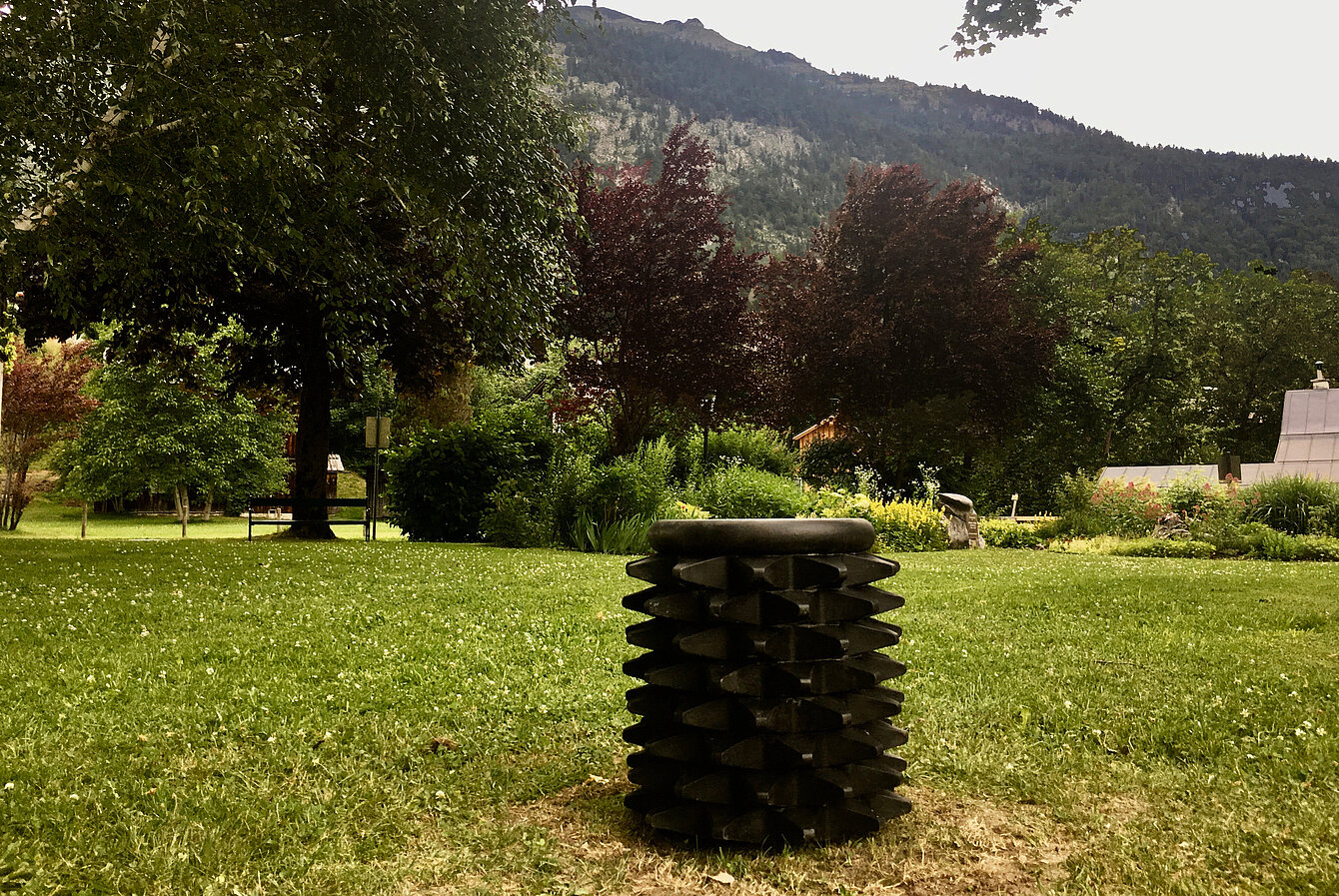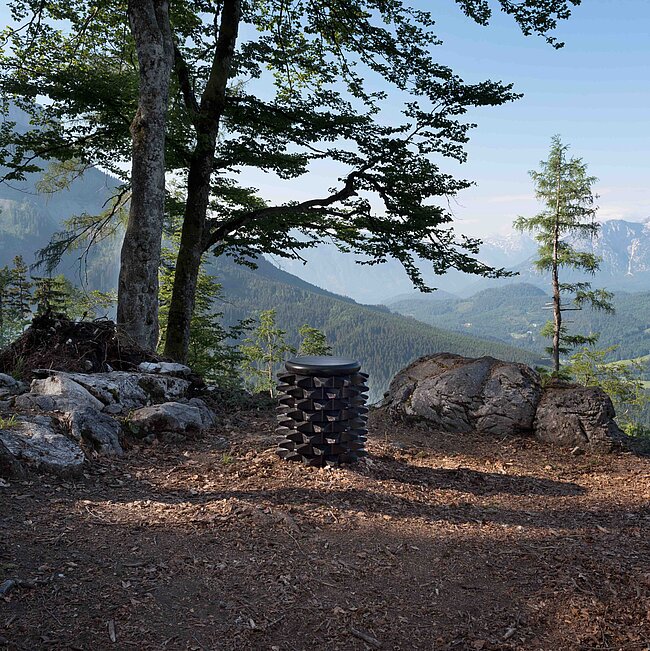This sculpture at the former Igel (Hedgehog), the fabled retreat used by Austrian oppositionists from 1944 to 1945, directs the gaze towards the Sandling mountain, which contains the salt mines where artworks looted by the Nazis were stored. Among the works they seized was a substantial portion of the collection of Oscar Bondy: the round, bristly form of the sculpture is derived from a similarly designed but smaller wooden object that he once owned. Eva Grubinger also created a second edition as part of the project Political Landscape which is located in the spa park of Altaussee. This property, owned by a distant relative of Bondy, was "Aryanized" in 1938 and restituted after the war.
Locations:
Spa Park (Kurpark), 8992 Altaussee
47°38'27.7"N 13°45'54.7"E
former Igel hideout, on the south slopes of the Hinterer Raucher (1735 m)
47°41'08.1"N 13°45'22.3"E























